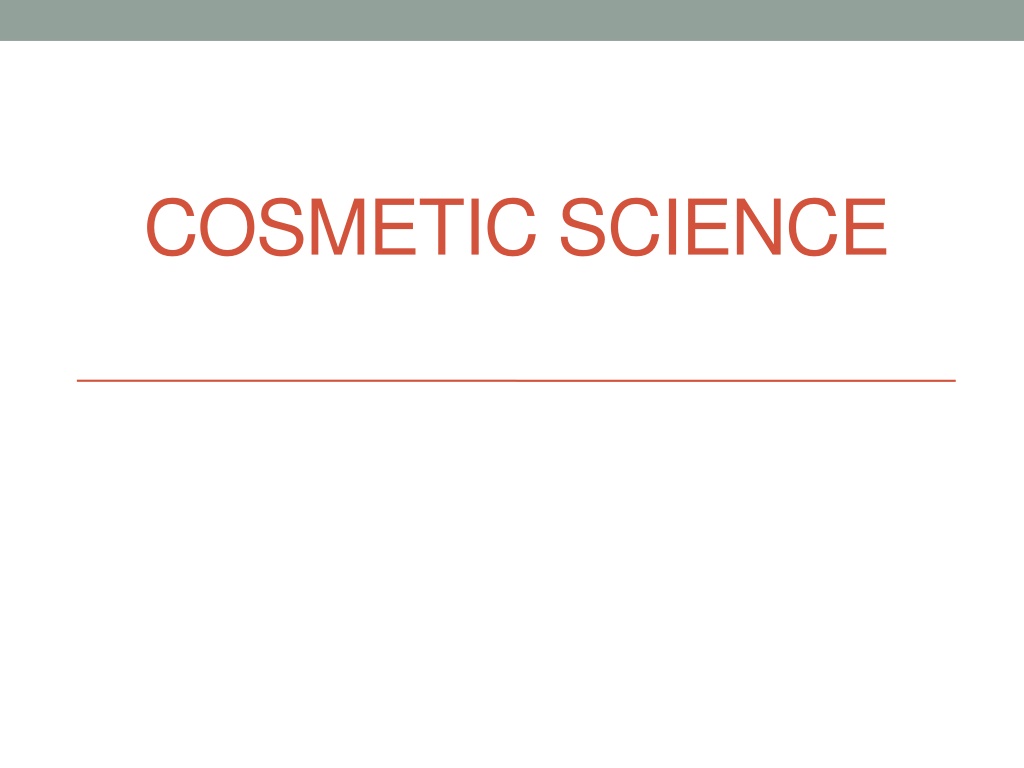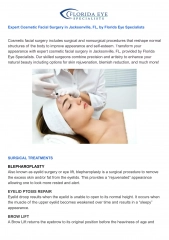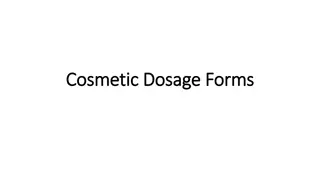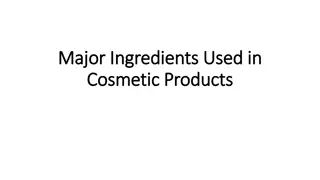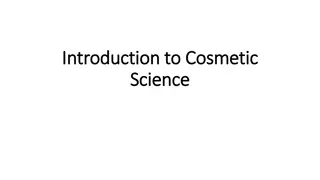Understanding Cosmetic Science and Regulations
Cosmetic science involves the study of products used for adornment and embellishment, covering various categories such as skin care, nail care, oral care, hair care, and makeup. This field encompasses the classification of cosmetics based on their use, functions, physical nature, and state. Regulations in different regions define cosmetics as articles intended for enhancing attractiveness, altering appearance, cleaning, perfuming, or protecting various parts of the body.
Download Presentation

Please find below an Image/Link to download the presentation.
The content on the website is provided AS IS for your information and personal use only. It may not be sold, licensed, or shared on other websites without obtaining consent from the author. Download presentation by click this link. If you encounter any issues during the download, it is possible that the publisher has removed the file from their server.
E N D
Presentation Transcript
Introduction Cosmetic:- Greek word- Kosmetikos (Adorn or embellishment) The study of cosmetic is called as cosmetology . A person who is licensed in cosmetology is called as cosmetologist . Product cover under cosmetic range from hair care, oral care, skin care, lipstick.
Classification Cosmetic are classified into 4 main categories 1. According to their use 2. According to their functions 3. According to their physical nature 4. According to state Classification of cosmetics according to their use 1. Use for skin- creams, powder, lotions 2. Use for nails- nail lacquers, nail lacquers remover 3. Use for teeth and mouth- dentifrices, mouthwash 4. Use for hair- shampoo, hair dyes, hair sprays 5. Use for eyes- eyeliners, mascara, eye shadow
Classification of cosmetics according to their function Curative and therapeutic e.g. antiperspirants and hair preparation Protective e.g. sunscreens Corrective Which improve tone and mask the imperfection either from face, hairs, heals e.g. .crack creams Decorative Gives the person a feeling of confidence, happiness e.g. lipsticks, nail lacquer
3. Classification of cosmetics according to their physical nature 1. Aerosols : e.g. body perfumes, after shave lotion 2. Cakes : E.g. rouge compact, makeup compact 3. Emulsions : E.g. cold cream, cleansing cream, vanishing cream 4. Pastes : E.g. tooth paste 5. Powder : E.g. tooth powder, talcum powder. 6. Soaps : E.g. shaving soap, bathing soap 7. Oils: hair oil 4. Classification of cosmetics according to their state 1. Solid 2. Liquid 3. Semisolid
Definition of cosmetics as per Indian regulations As per section 3 of the drug and cosmetics act 1940 and rule 1945 cosmetics means any article intended to be rubbed, poured, sprinkled, or sprayed on or introduced promoting attractiveness or altering the appearance and includes any article intended for use as a component of cosmetic. Definition of cosmetics regulations in the European Union The European Union cosmetic directive defines a cosmetic as any substance or preparation intended to be placed in contact with the various external parts of the human body (epidermis, hair system, nails, lips and external genital organs) or with teeth and the mucous membranes of the oral cavity with a view exclusively or mainly to cleaning them, perfuming them changing their appearance and/or correcting body odours and /or protecting them or keeping them in good condition
